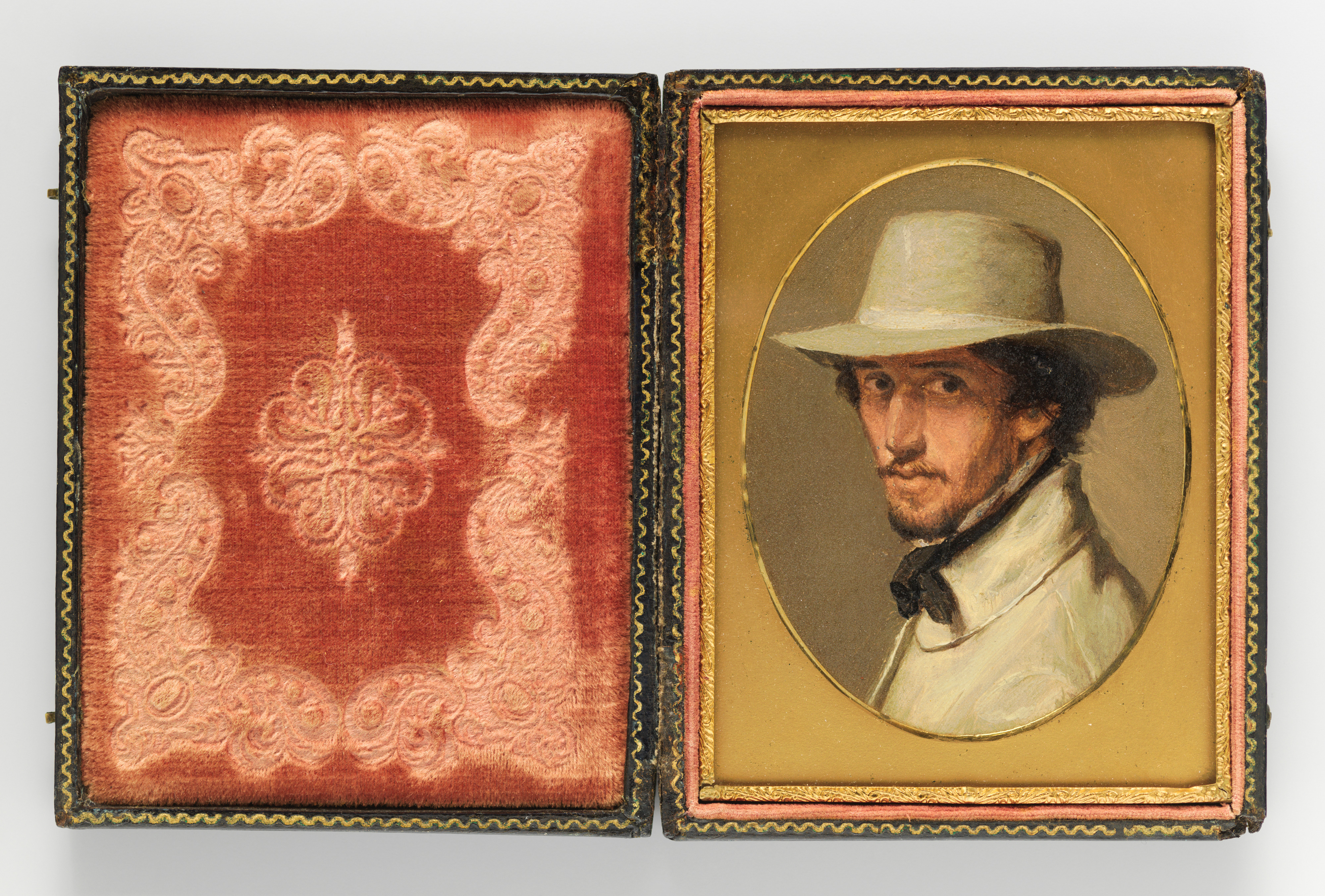Self-portrait
Sanford Robinson Gifford American
Not on view
As a second generation Hudson River school painter, Gifford emerged as a leading landscape painter with a signature style as a master of light and atmosphere. Major works painted during the Civil War era, such as the Metropolitan’s "Gorge in the Mountains (Kauterskill Clove)," 1862, in which the circular diffusion of sunlight fills the central void, secured the artist’s reputation. A year after his death, Gifford, who served as a founder of the Metropolitan Museum in 1870, was accorded the institution’s first monographic retrospective in 1881, in its new building in Central Park.
The exquisite "Self-Portrait" by the artist was executed in 1853, at the age of thirty and when Gifford was painting in the vicinity of his home town of Hudson New York. It is based on a beautiful pencil drawing from the summer of that year. Gifford’s oil on paper "Self-Portrait" is created in an oval format and is placed in a daguerreotype case. The artist wears his working attire – a broad-brimmed hat to shade his eyes, and an off-white artist’s smock with a black kerchief around his neck. He turns to confront the viewer with a bold and confident gaze. Gifford used small, delicate brush strokes, and a subtle palette in this work.
Due to rights restrictions, this image cannot be enlarged, viewed at full screen, or downloaded.
This artwork is meant to be viewed from right to left. Scroll left to view more.



